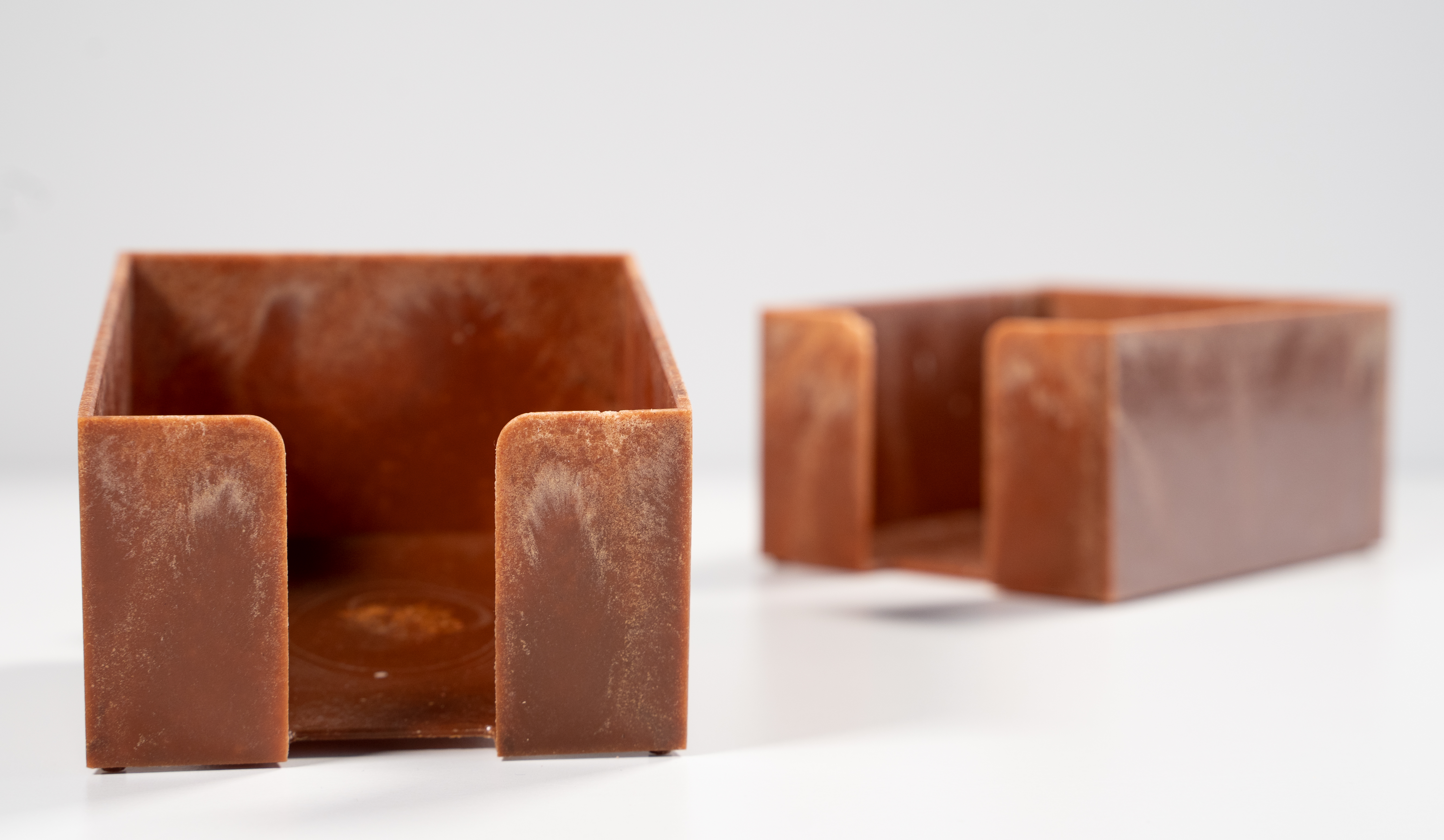

Together with the companies ceresan Erfurt GmbH and Dornburger Kunststoff-Technik GmbH, the Fraunhofer IMWS is working on environmentally friendly and resource-saving plastic substitute products. The developed composites essentially consist of flour and cellulose-containing natural fibers and can be further processed like conventional plastics.
Plastic products are ubiquitous in our daily lives. Currently, 95 percent of these are still made from petroleum and are therefore a major burden on the environment. In order to protect the environment, plastic packaging and products are to be greatly reduced in the future. But what alternatives are there to plastic products?
This question is addressed by the Fraunhofer IMWS, together with partners, in the project "Flour Composite". Composite materials are to be produced from renewable, non-synthetic starting materials and processed by means of injection molding that are competitively priced compared to the petroleum-based products currently in use.
The composites are to consist essentially of flour and cellulosic natural fibers, be produced using twin-screw extruders, and be capable of further processing like conventional thermoplastics. However, the properties of the starch contained in the flour have a negative impact on its suitability for use in many applications. For plastic substitute material, starch is therefore either chemically modified, which adversely affects its environmentally friendly character, or used as a thermoplastic starch blend phase with hydrophobic, often petroleum-based polymers.
The project therefore sought to improve the material and processing properties of thermoplastic starch by incorporating biowaxes and fibers containing cellulose. To further reduce the CO₂ footprint, cereal flour was used instead of pure starch. This eliminates the energy-intensive and wastewater-emitting separation of starch from flour and significantly reduces raw material costs. Only feed-grade flours that are sufficiently available on the market were used, which means that lower-quality flours can be processed in a way that increases their value and avoids tying up valuable arable land.
The composites developed in the project consist exclusively of cereal flours, bio-plasticizers, bio-waxes, cellulose fibers and bio-additives. Note boxes could be injection molded from the flour composites. Other office supplies and consumer products are to follow.
 Fraunhofer Pilot Plant Center for Polymer Synthesis and Processing PAZ
Fraunhofer Pilot Plant Center for Polymer Synthesis and Processing PAZ